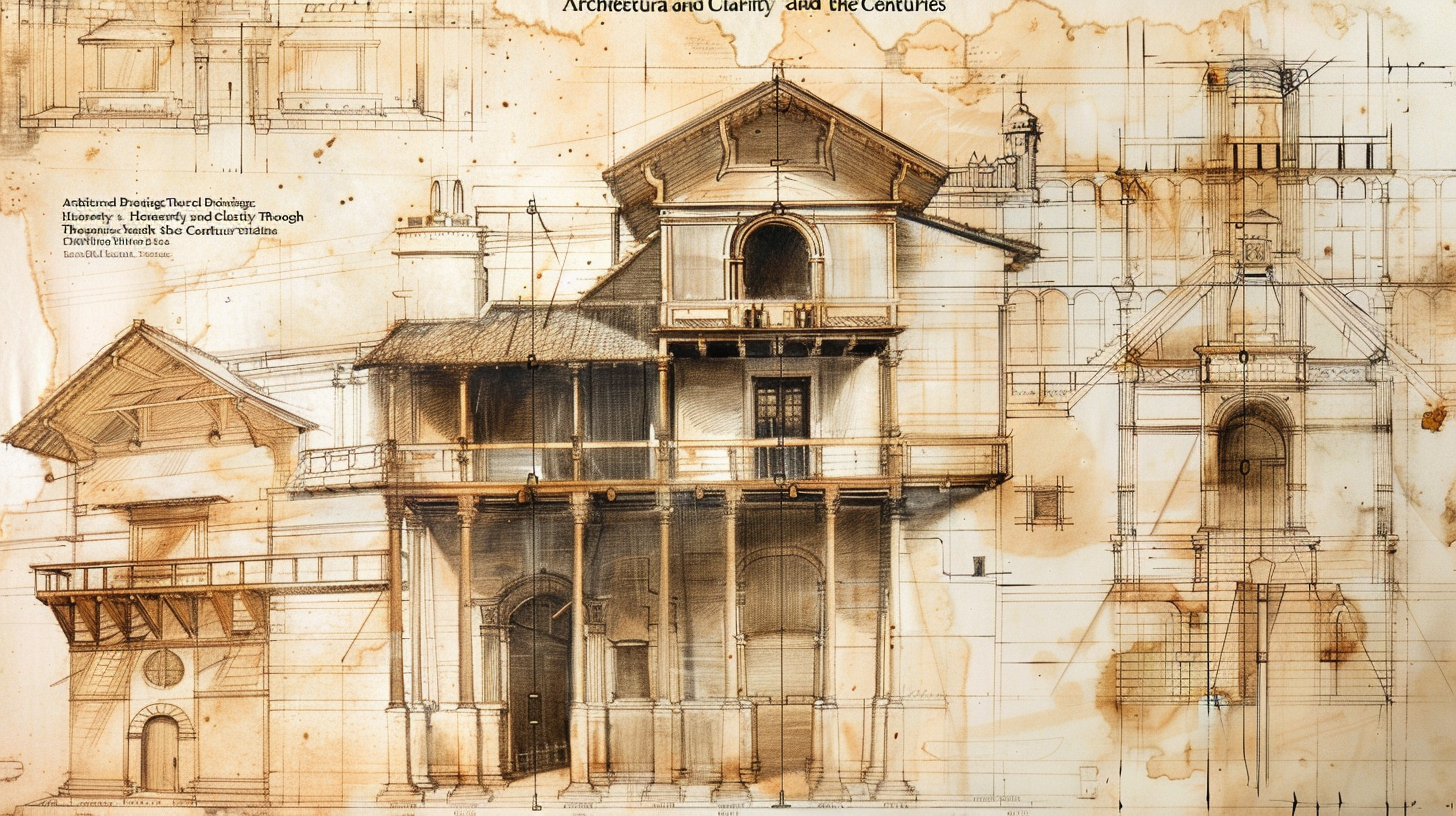
Title: The Future of Architectural Drawings: Embracing Technology and Collaboration
Introduction:
In the May 2024 issue of Apollo, we delve into the intriguing world of architectural drawings and the potential future trends associated with this age-old practice. Taking inspiration from Leon Battista Alberti’s emphasis on clear communication, we explore how technology and collaboration are reshaping architectural drawings. This article will provide a comprehensive analysis of key points and offer unique predictions and recommendations for the architectural industry.
Key Points:
1. Technological Advancements in Architectural Drawings:
The advent of digital tools such as Computer-Aided Design (CAD) software has revolutionized architectural drawings. With 3D modeling capabilities becoming increasingly advanced, architects can now create highly realistic representations of their designs. The integration of Virtual Reality (VR) and Augmented Reality (AR) technologies further immerses clients and stakeholders in the design process, enabling them to visualize projects in unparalleled detail.
2. Collaborative Design Processes:
Collaboration is becoming a fundamental aspect of architectural design. Teams are now using cloud-based platforms and project management tools to facilitate seamless communication and teamwork. These platforms allow architects, engineers, and clients to collaborate in real-time, regardless of their physical location. This approach allows for quicker decision-making, improved coordination, and increased efficiency throughout the project lifecycle.
3. Sustainable Design Integration:
The industry is witnessing a growing emphasis on sustainable architecture, and architectural drawings play a crucial role in this movement. Future trends suggest tighter integration of sustainable design principles within the concept, schematic, and construction documentation phases. The use of energy modeling tools, daylight analysis, and material optimization software will enable architects to create eco-friendly buildings while maximizing energy efficiency and reducing carbon footprints.
4. Digitization of Building Information Modeling (BIM):
Building Information Modeling (BIM) has gained widespread popularity in recent years. In the future, BIM will be further enhanced through the digitization of architectural drawings. This will enable seamless data exchange and integration with other disciplines such as structural engineering, mechanical systems, and construction management. As a result, project stakeholders will have access to accurate and up-to-date information throughout the building’s lifecycle, enhancing communication and reducing errors.
5. The Role of Artificial Intelligence (AI):
Artificial Intelligence (AI) is expected to play an influential role in the future of architectural drawings. AI algorithms can analyze vast amounts of data, optimize design solutions, and identify potential flaws within architectural and engineering designs. This technology can assist architects in generating innovative designs while adhering to strict regulations and safety standards. By leveraging AI, architects will have greater freedom to explore new possibilities and push the boundaries of architectural creativity.
Predictions and Recommendations:
1. Embrace and Invest in Advanced Digital Tools:
Architectural firms should invest in state-of-the-art software and technology to remain competitive in the evolving industry. Incorporating CAD, VR, AR, and BIM software into their workflows will allow architects to deliver compelling visualizations and improve collaboration throughout the design process.
2. Foster Cross-Disciplinary Collaboration:
Architects must embrace collaboration within and outside their domains. Collaborative platforms and tools facilitate efficient communication and seamless information exchange, enhancing overall project outcomes. By actively engaging with engineers, sustainability experts, and other professionals, architects can develop more holistic and sustainable designs.
3. Prioritize Sustainable Design:
As society becomes increasingly concerned about climate change, architects should integrate sustainable design principles into their projects. By leveraging energy modeling and material optimization software, architects can create environmentally conscious buildings that align with regulatory standards and exceed client expectations.
4. Embrace AI as a Design Assistant:
Architects should view AI as an invaluable tool rather than a replacement for their creative expertise. By using AI algorithms to analyze data and generate optimized design solutions, architects can streamline their workflows, improve efficiency, and deliver innovative designs that surpass client expectations.
Conclusion:
The future of architectural drawings is promising, driven by technological advancements, collaborative processes, sustainability, and AI integration. By embracing these trends and implementing our recommendations, architects can navigate a transformative landscape that empowers them to create awe-inspiring designs while meeting the needs of an ever-changing world.
References:
1. AIA Architect: “Technology and Collaboration: The Future of Architectural Drawings”
(https://www.aia.org/resources/6381739-technology-and-collaboration-the-future-o)
2. ArchDaily: “The Future of Architectural Visualization and Immersive Storytelling”
(https://www.archdaily.com/972848/the-future-of-architectural-visualization-and-immersive-storytelling)
3. Autodesk: “BIM and the Future of Architectural Design”
(https://www.autodesk.com/solutions/bim-hub/future-architecture)
4. ArchDaily: “The Role of Artificial Intelligence in Design”
(https://www.archdaily.com/937215/the-role-of-artificial-intelligence-in-design)
5. World Green Building Council: “Net Zero Carbon Buildings: The Case for Action”
(https://www.worldgbc.org/advancing-net-zero/net-zero-carbon-buildings-case-action)
